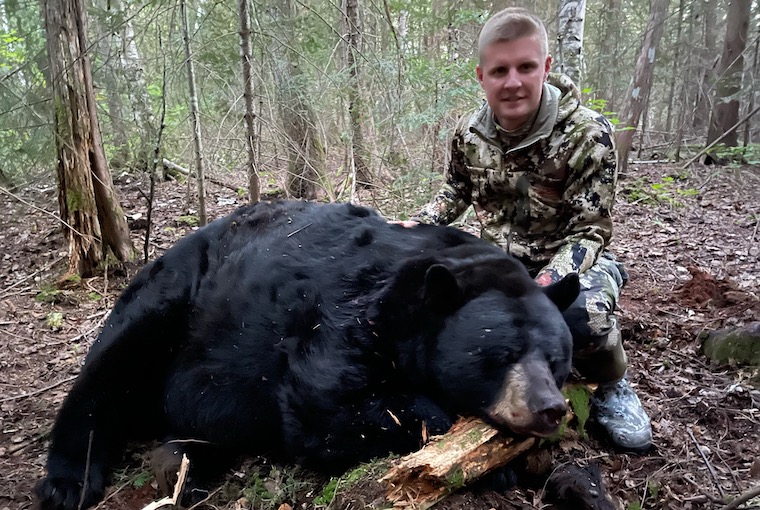
Shaun Stratford sat with his back against the huge bear he had just shot and recovered, while the momentousness of the occasion began to sink in. There, in the dark boreal forest near his bear bait site, he became emotional.
“I knew this hunt was all over. And I thought, ‘I will never top this bear. What am I going to do now?’” he said.
Making the calls
Before he began processing that thought, however, he made the necessary post-hunt phone calls. First, to Shawn Galea of Advanced Taxidermy, who Stratford said is “his biggest hunting mentor” and bear hunting partner. Then he called his “northern brothers” Dave Smetana of Marten River, and Matt Van Vliet of Temagami. Galea, who was too far away to help, offered congratulations and the kind of heartfelt congratulations and ribbing only a hunting buddy can get away with. The other two dropped everything so they could help Stratford move the 800-plus pound black bear he nicknamed “Chevy” across 300 yards of boreal forest to his vehicle and then to the lodge.
Yes, you read right. Chevy weighed more than 800 pounds.
Stratford, a 10-year bear hunting veteran from Hamilton, had named the big boar for the white chevron it bore and for its size. He and his bear hunting partners, including Galea and his daughter (and well-known outdoors television personality) Paige, knew the awe-inspiring bruin well, for they had been hunting it for two seasons.
Bear busted him before
Stratford had trail camera photos of it and was even busted by it during legal hours on a previous hunt – so he knew it was huge.
But it was only when he walked up to its lifeless body on that evening of Sept. 16, shortly after 7 p.m., that he understood what that really meant.
“I tried to lift its front leg to see the chevron, but I couldn’t even do that,” he said.
After the shot, the bear literally cleared its own trail by running through and snapping saplings up to an inch thick as it went.
That hunt was the fifth time Stratford sat in a stand for Chevy that year. He had pursued it in the spring and in the fall. It was no easy task.
The bait site was 300 metres from the road, and he and others walked and carried in 2,000 to 2,500 pounds of bait each week.
“Baiting was an all-day job,” Stratford said.
Lessons learned
He had baited and hunted the day before and decided, on a whim, to hunt that second evening and was in the stand at 5:15 p.m.
“I didn’t have a lot of confidence that Chevy would show, since he had busted me not that long ago and had been at the site at 4:30 that morning, but I love watching bears. I was hoping that he would come in early and beat the other bears to the bait in order to avoid the rush, but I had zero expectations.”
Despite this, Stratford sat in the stand with his compound bow ready and a .300 Win Mag rifle for defense, should it come to that. He started carrying the firearm after an incident several years ago in which a mortally wounded 600-pound bear that he arrowed began destroyed the ladder stand he was in. That potentially fatal experience ended when he hit the animal with a second well-placed arrow, but the lesson was not lost.
What he learned then also proved useful on this hunt. Stratford had been sitting in the stand passing the time by checking out social media sites while a small bear was at the bait. Suddenly, Chevy arrived in broad daylight at 6:50 p.m.
Second chances
Stratford is not too proud to admit that buck fever took hold for the first time. He says he was shaking so bad that he dropped his bow and it hit the ground 20 feet below with a crash that he was sure would spook both bears.
Somehow, it did not. They merely looked at the source of the noise and carried on.
Realizing he was given an incredible second chance, he picked up the rifle and shot the bear. It tore off into the surrounding woods “like a Mack truck climbing a hill in first gear.”
It happened so fast that he was plagued by doubt, which was reinforced by the fact that he did not hear a death moan. It didn’t help that the thick foliage prevented him from seeing it as it ran off, either. Yet when he got down from the stand and cautiously moved in the direction it went, he quickly found it piled up and lifeless some 30 yards from where it was struck.
Reinforcements arrive
Once his crew arrived, it took winches, a block and tackle, and a side-by-side UTV to move the animal. Somewhere around three hours later, the bear was loaded up and on the way to a nearby lodge. Once there, it was field dressed. The scales on hand were not capable of dealing with its weight so they loaded the innards on the scale. They weighed in at 153 pounds.
He drove the bear south that night, stopping for a brief motel rest, and to buy 96 bags of ice to keep it cool. The bear was skinned that morning at Advanced Taxidermy and the hide was also weighed. The meat was then taken to Stratford’s favourite wild game butcher, where it and the bones were also measured.
In total, the hide, meat and bones weighed 650.9 pounds. Galea believed another 20 or so pounds of blood were lost on the truck ride home, though that was not included in the estimated weight.
At press time, the skull has been officially green scored at 21 6/16, which would make it number eight in the Ontario record books for black bear.
Stratford has donated some of the meat and all of the bear fat to local Indigenous residents.
What’s next? He’s hoping to learn how to hunt bears in more traditional ways and perhaps hunt other species of bears as well in the future. In the meantime, he’s looking forward to seeing the full body mount of Chevy that Shawn is working on.


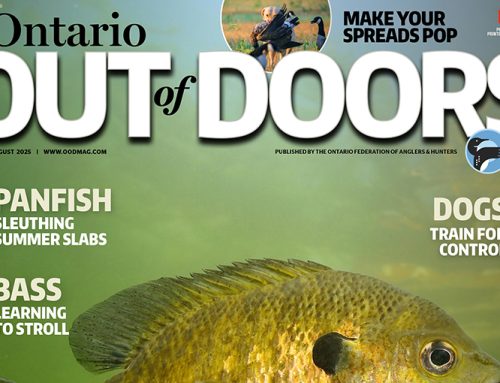
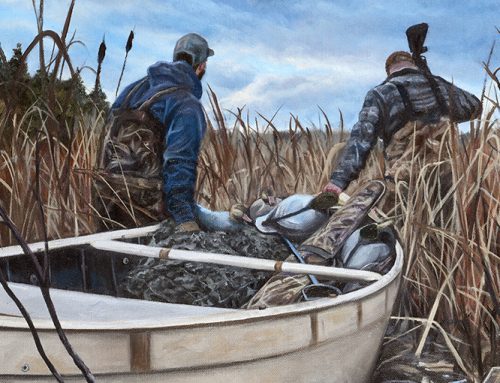
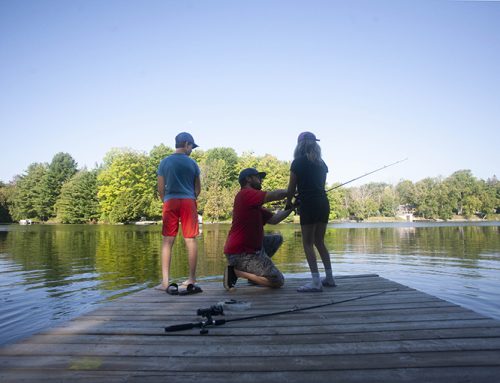
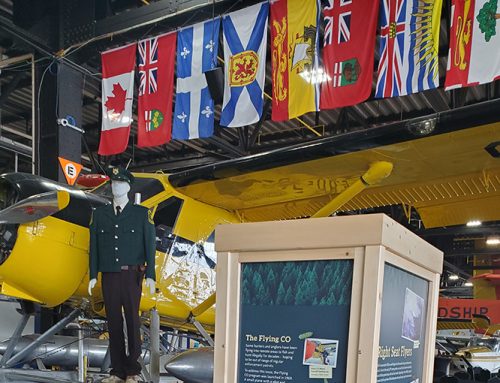
Leave A Comment